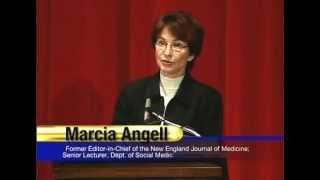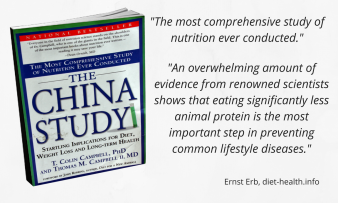The Truth About the Drug Companies - Dr. Marcia Angell
Americans spend more than $200 billion a year on prescription drugs. What are they getting for their money? Dr. Marcia Angell, senior lecturer of Harvard Medical School's Department of Social Medicine and former editor-in-chief of the New England Journal of Medicine, answers that question and more in this installment of the President's Lecture Series at The University of Montana.
Despite its monotonous style and sometimes illegible charts and images, the presentation might be a good way to initiate the lay public into the causes of high drugs prices and the means the pharmaceutical industry uses to manipulate patients.
00:56: A parallel between Oliver Wendell Holmes’s work and Dr. Marcia Angell’s efforts to limit the influence of pharmaceutical companies.
05:24: What is causing the high expenditures on prescription drugs and law suits against pharma companies.
08:12: Pharma’s side of the story.
09:39: Prescription drug sales in 2008 and world’s top ten drug companies: Pfizer (US); GlaxoSmithKline (UK); Novartis (CH); Sanofi-Aventis (FR); AstraZeneca (UK); Roche (CH); Johnson & Johnson (US); Merck (US); Abbott (US.); Lilly (US).
12:23: What do the annual reports of these companies have in common (marketing, research and development costs, profit margin).
14:23: The phenomenal profit margins (18 %) of the top ten american pharmaceutical companies. The other industries listed in Fortune 500 have an average profit of 0,9 %.
16:58: The real expenditure of pharmaceutical companies.
18:58 What does the patient get for the money spent on drugs. Dr. Marcia Angell declares that, during pharmaceutical studies, the efficacity of a new drug is assessed through a comparison with a “sugar pill”. However, the phases of clinical research clearly state that this procedure applies only to the situations when there is no other drug available for the same purpose. Otherwise, during the third phase of a clinical trial, the effects of the new drug have to be compared with an already established drug (the so called “gold standard”).
24:00: “Me-too drugs” and why are they the major output of the pharmaceutical industry.
26:40: How to broaden the market, getting or extending monopoly-rights.
29:02: The origin of prescription drugs: the inovative research was not done in the companies that sell the drugs, but in laboratories founded by the National Institutes of Health (government agency) and in universities.
31:50: Where does the $ 70 billion marketing expediture go? Continuing education programs for doctors. “Medicare prescription drug benefit” (2003), as an example of the Pharma's lobbying power.
42:25: Reforms that are needed.
46:40: Useful recommendations for patients.
52:35: A session of questions and answers (the Japanese health system, articles sponsored by the pharmaceutical industry, the court case against Novartis, the health reform in United States, alternative medicine and lifestyle changes, the rebate problem, advice for Pharmacy graduates, iatrogenic deaths).
More videos
To understand health and ecology, extensive basic knowledge is required. Here you will find fact-based texts and book reviews.
Due to a lack of knowledge, vegetarians, vegans, and raw foodists often eat unhealthily – for years or even decades. This basic knowledge can prevent this.
The China Study clearly lays out how the current Western diet can be improved to prevent lifestyle diseases. We say: Most important book on nutrition and health
Erb Muesli with Rolled Oats is a vegan (lactose-free), raw muesli. It serves as an especially healthy breakfast and is a good “bread replacement.”
These Cucumber Rolls with “Goat’s Cheese” and Mint Sauce hold together surprisingly well. They are ideal as an appetizer or finger food.
Sun-dried chili peppers and parsley give the savory pea pancakes a special flair. We recommend trying the pancakes with curry.











